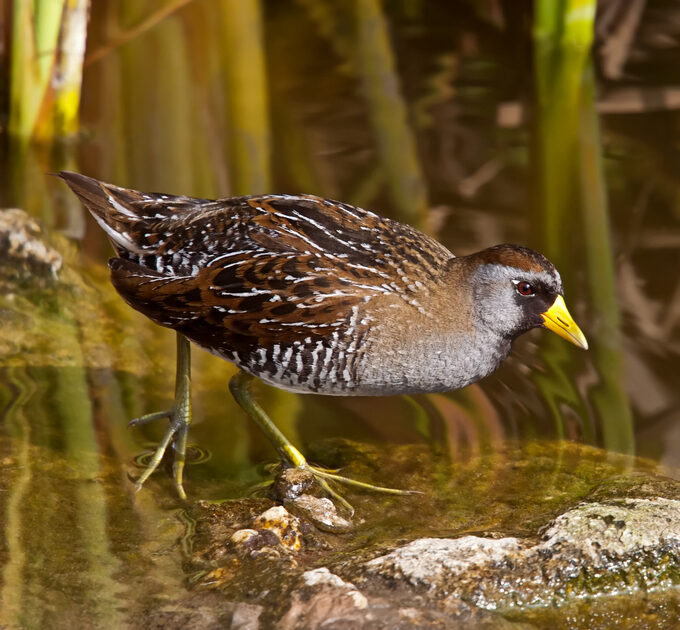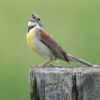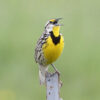Sora, Porzana carolina
Bill Rowe
Not everyone has ever seen a rail, so it’s time to introduce them, starting with the commonest and most easily observed of the seven American species: the Sora. This is a robin-sized bird of wetlands small and large, nesting mainly in cattails, sedges, and bulrushes across the northern half of the U.S. and the southern half of Canada. As a migrant, it may throng the marshes on certain days in spring and fall, mostly unseen until you make a sharp noise, like clapping your hands, whereupon all the Soras nearby will start peeping and whinnying in chorus, letting you know how numerous they really are. By staying put in a strategic spot with a good view of vegetation clumps and watery edges, you will eventually get to watch one or more of them as they peek out from between the reeds or even walk out on an open mudflat to look for prey. Later, as you tromp through a grassy field, you may scare up a Sora or two and watch them flutter away on narrow, weak-looking wings—a bit of a misimpression, as they are strong night fliers that travel long distances to and from their wintering grounds. In many states, Soras are actually treated as a gamebird, with a hunting season and bag limits, but it’s unclear how many people really try for them. All around the world, on six continents and countless islands, there are rails of 100+ species, some of them common, some rare and local; two of them are much like the Sora (one in Eurasia and one in Australia) and are placed with it in the genus Porzana.
IDENTIFICATION: With a good look you can’t mistake an adult Sora for anything else, given its smallish size, gray foreparts with black face, and bright yellow bill. Females are the same but with less black and a duller bill. Juveniles share the brown-and-black-streaked back and wings and the white barring on the flanks, but they are tan or buffy on the face and breast, leading to possible confusion with the rare Yellow Rail, a far more difficult bird to find and to get a look at. Be sure to listen to the calls using the link below, so you can recognize a Sora when you hear it.
ST. LOUIS STATUS: A common migrant in April and May and again in August through early October. It breeds in Missouri on an occasional basis here and there, raising the possibility that it could be found nesting around St. Louis, but it is gone in winter.
Learn more and listen to the calls of Soras here.
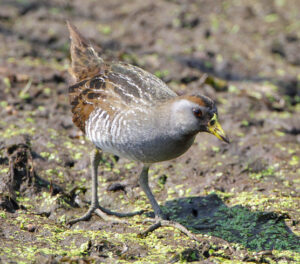
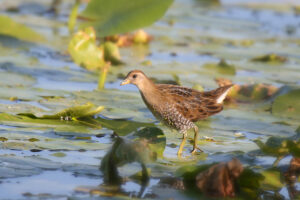
Female: less black, duller bill
Photo Credit: Al Smith
Juvenile: buffy face and breast

